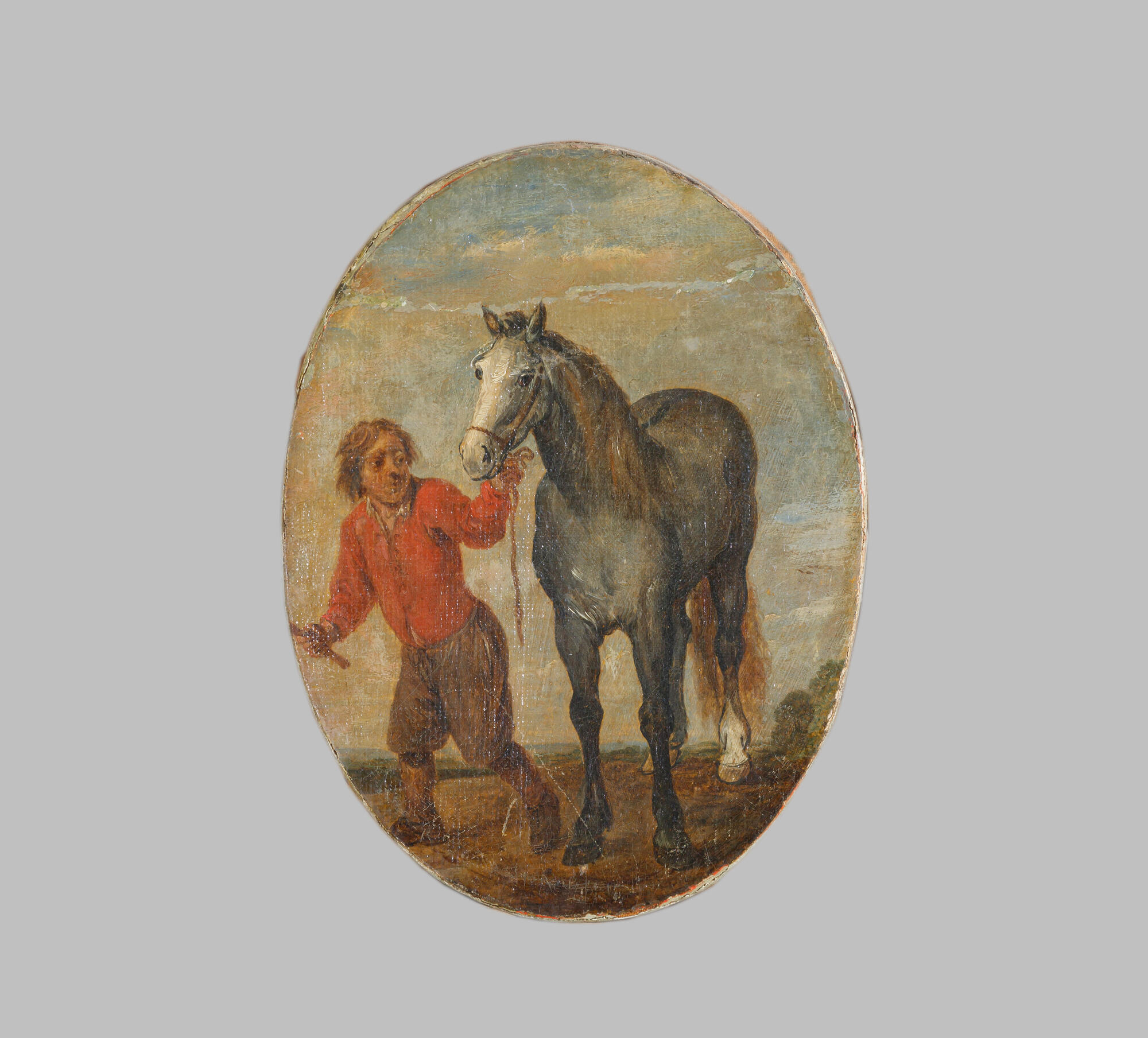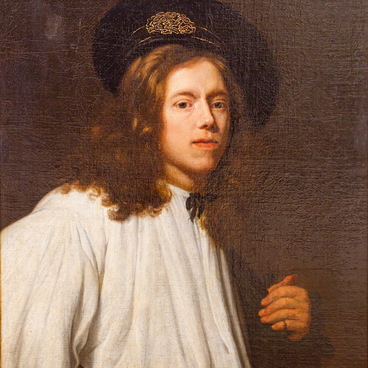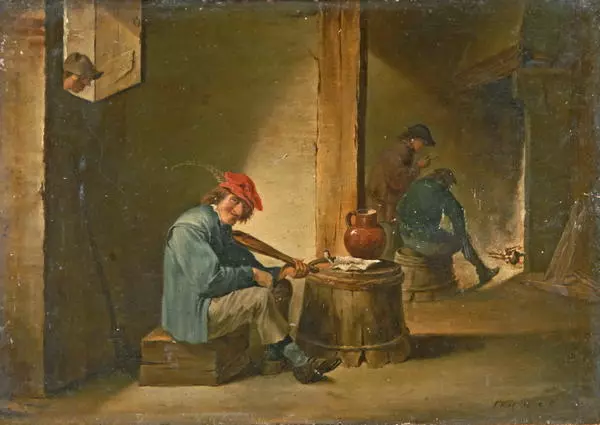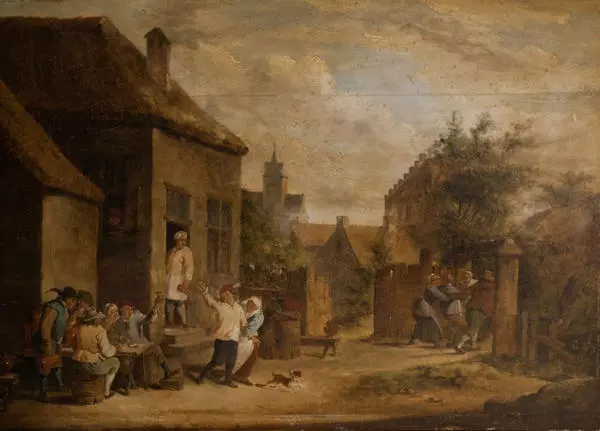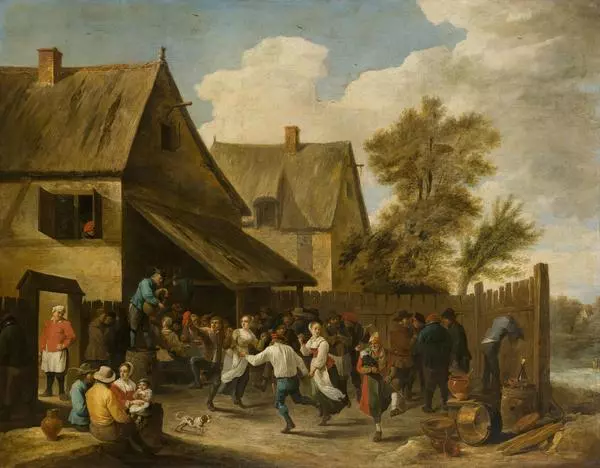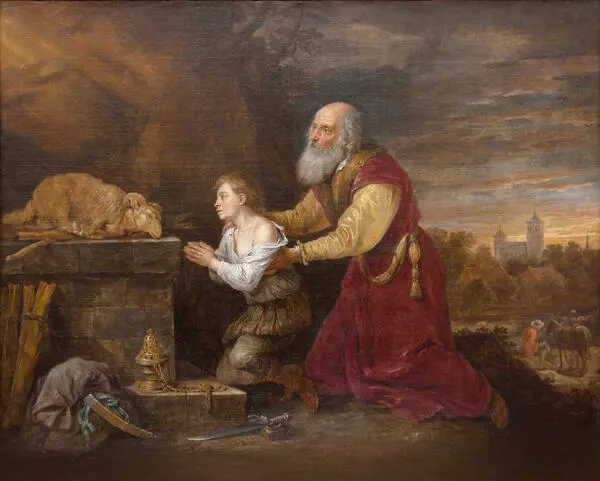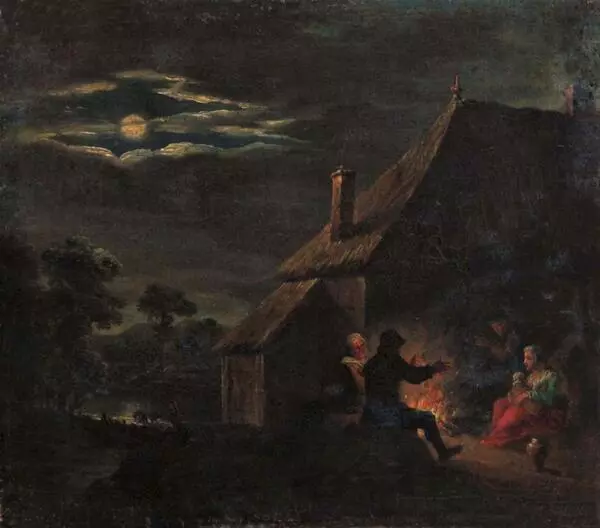The painter David Teniers the Younger is as important to the history of late Flemish art as Rubens and Anthony van Dyck. He created several hundred paintings with genre scenes and religious stories. Among other subjects, he depicted scenes in pubs, inns, the interior of houses, peasant festivals, Dutch landscapes, secular portraits, and Bible stories. In the 18th century, his works were often reproduced on French tapestries, and nowadays, his paintings are displayed in all of the world’s major museums, including the Louvre, the Hermitage, and the Prado Museum. The exhibition of the Voronezh Art Museum also houses a painting by David Teniers known as “A Stableman and a Horse”.
The artist possessed a great knowledge of animal anatomy and studied the movements and habits of animals. He did not specialize in animalier art, but often depicted animals in the scenes of peasant life. He did this to illustrate the rural lifestyle and emphasize the strong mutual dependence of humans and animals.
David Teniers the Younger was born in Antwerp in 1610 and received his first painting lessons from his father David Teniers the Elder who was a painter and a picture dealer. At the age of 22, David Teniers the Younger became a member of the Antwerp Guild of Saint Luke. Five years later, he married the daughter of the famous painter Jan Brueghel the Elder. By that time, her father had already died, and her guardian was Peter Paul Rubens. This fact resulted in a friendship between Teniers and Rubens.
In 1651, Teniers moved to Brussels where he was appointed the keeper of the art gallery and the court painter of the Spanish governor. This period is reflected in the several versions of his painting “The Archduke Leopold Wilhelm in his Painting Gallery in Brussels”, and the book “Theatrum Pictorium”, or “Theatre of Painting”. For this book, David Teniers created 243 reproductions of Italian paintings from the Archduke’s collection. In 1663, he initiated the establishment of the Antwerp Academy of Fine Arts based on the examples in Rome and Paris.
David Teniers the Younger enjoyed international fame in his lifetime and was particularly popular in France where Rococo-style painters were influenced by his art. He continued to paint as long as he was healthy enough and still had good eyesight. His last dated painting was created in 1683, seven years before his death.
The artist possessed a great knowledge of animal anatomy and studied the movements and habits of animals. He did not specialize in animalier art, but often depicted animals in the scenes of peasant life. He did this to illustrate the rural lifestyle and emphasize the strong mutual dependence of humans and animals.
David Teniers the Younger was born in Antwerp in 1610 and received his first painting lessons from his father David Teniers the Elder who was a painter and a picture dealer. At the age of 22, David Teniers the Younger became a member of the Antwerp Guild of Saint Luke. Five years later, he married the daughter of the famous painter Jan Brueghel the Elder. By that time, her father had already died, and her guardian was Peter Paul Rubens. This fact resulted in a friendship between Teniers and Rubens.
In 1651, Teniers moved to Brussels where he was appointed the keeper of the art gallery and the court painter of the Spanish governor. This period is reflected in the several versions of his painting “The Archduke Leopold Wilhelm in his Painting Gallery in Brussels”, and the book “Theatrum Pictorium”, or “Theatre of Painting”. For this book, David Teniers created 243 reproductions of Italian paintings from the Archduke’s collection. In 1663, he initiated the establishment of the Antwerp Academy of Fine Arts based on the examples in Rome and Paris.
David Teniers the Younger enjoyed international fame in his lifetime and was particularly popular in France where Rococo-style painters were influenced by his art. He continued to paint as long as he was healthy enough and still had good eyesight. His last dated painting was created in 1683, seven years before his death.
